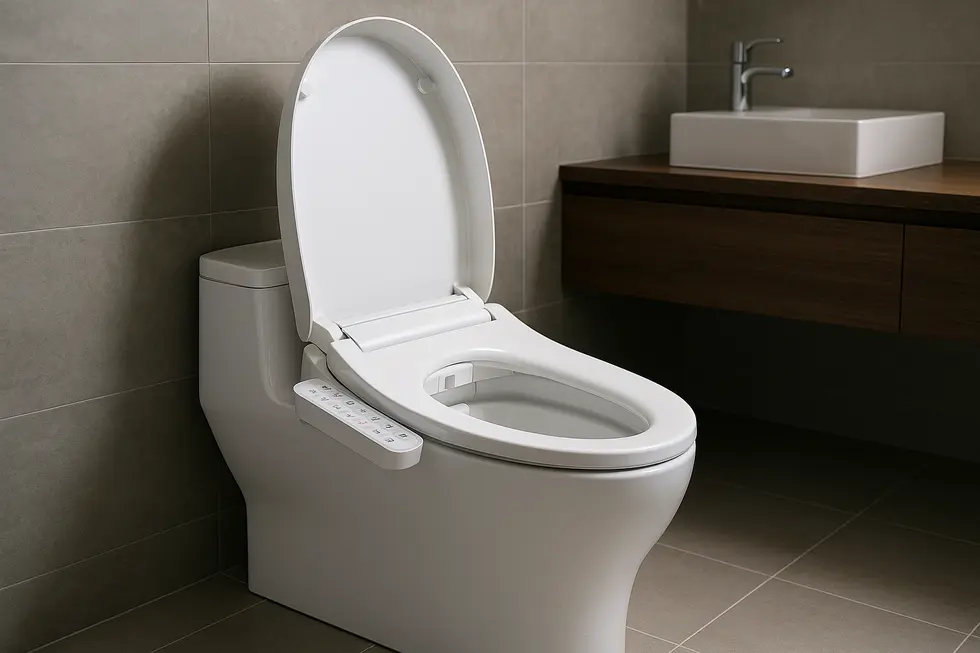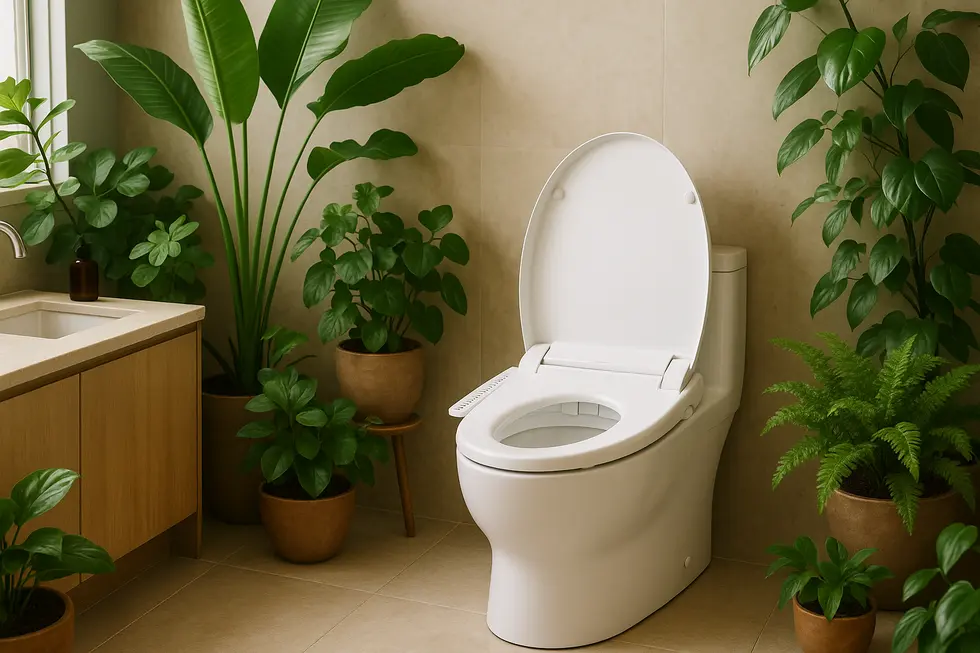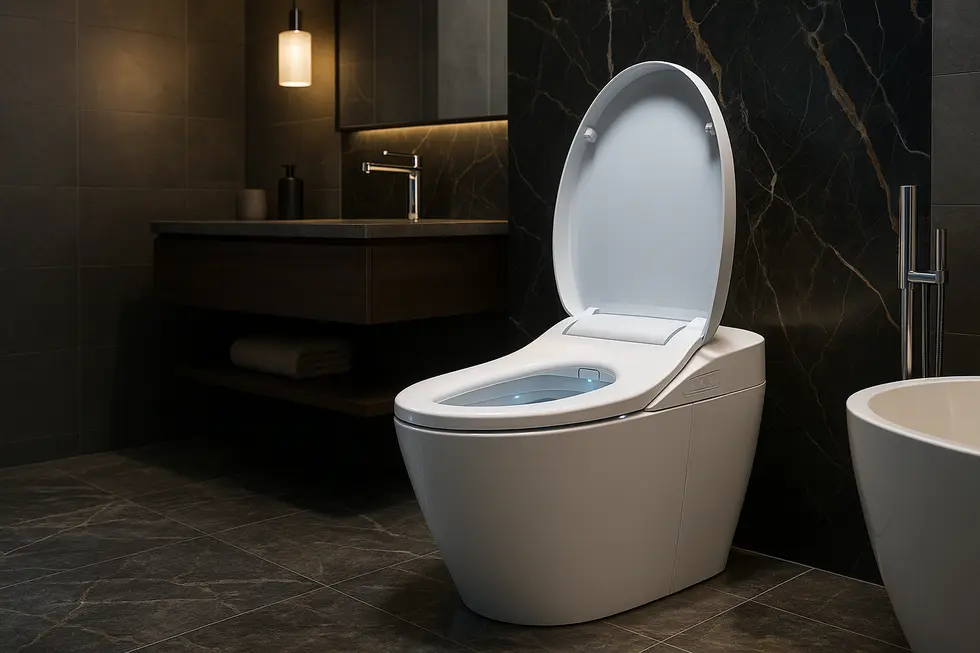Bidet Seat
Revolutionizing Bathroom Hygiene: The Self-Cleaning Bidet Seat
As we increasingly seek enhanced hygiene options within our homes, the self-cleaning bidet seat emerges as a frontrunner, combining advanced technology with practical benefits. This article unpacks this innovation across three vital dimensions. First, we delve into the technological advancements that make these devices a staple of modern bathrooms. Then, we explore the economic factors driving their adoption and market trends shaping their evolution. Finally, we evaluate the societal, health, and environmental impacts, positioning these seats as not just a luxury, but a necessity for many families.
Smarter, Cleaner, Warmer: How Cutting-Edge Tech Is Redefining the Self-Cleaning Bidet Seat

The self-cleaning bidet seat has always promised hygiene without hassle, yet recent engineering leaps make that promise feel almost futuristic. At the heart of the upgrade sits the nozzle. Instead of a simple rinse, today’s models employ multi-stage self-sanitizing cycles that flush the stainless tip inside and out, then coat it with a micro-thin antimicrobial film before it retracts. Because the nozzle lives inside a sealed housing, exposure to airborne germs drops dramatically, giving users confidence after every flush.
Comfort advances run parallel to hygiene gains. Whisper-quiet heating elements now warm both the seat and the incoming water in seconds, eliminating the start-of-day chill that once deterred new users. Sensors track how long someone remains seated and fine-tune temperature on the fly to conserve energy. The same sensors enable lids that open, close, and even flush without a single hand movement—a subtle change that slashes the spread of bathroom-borne bacteria.
Personalisation, meanwhile, has moved from a luxury to an expectation. Instead of fixed spray angles, stepper motors slide nozzles millimetre by millimetre, storing exact positions for each family member. Pressure and temperature memory follow suit, so a child, an athlete, and a senior can all enjoy tailored cleansing without navigating menus. For households seeking midnight discretion, integrated LED night lights cast a gentle glow while low-speed fans pull odours through charcoal filters, keeping restrooms welcoming around the clock.
A recent breakthrough tackles two perennial gripes: splashing and lingering smell. By injecting a cushion of micro-foam into the bowl before use, the seat blocks ricochet and traps odour molecules under the surface. Because the foam collapses on flushing, no extra cleaning is required.
Taken together, these innovations reduce toilet-paper dependency, improve accessibility, and invite even the most hesitant newcomer to explore the many bidet toilet benefits. For a deeper technical look at how modern seats weave these features into one seamless user experience, see this comprehensive retail overview of a newly released smart model: https://www.homedepot.com.
From Luxury to Laundry List Essential: How Market Forces Are Propelling Self-Cleaning Bidet Seats into Everyday Bathrooms

Once considered a niche luxury, the self-cleaning bidet seat is fast becoming a staple of mainstream bathrooms. The driver is an unmistakable shift in economic dynamics: prices have fallen while feature sets keep ballooning. Five years ago, on-demand warm water and automatic nozzle rinsing were reserved for top-tier models. Today, sub-$200 units deliver unlimited heated wash, warm-air drying, and ambient night-lighting without sacrificing the core promise of hygienic, self-sterilising nozzles.
Affordability alone does not explain the surge. Heightened health awareness following global health crises has elevated hygiene from preference to priority. Consumers want surfaces they never need to touch and water jets that disinfect themselves before and after every use. Self-cleaning bidet seats answer both expectations, often adding UV or electrolysed-water cycles that reassure even the most germ-conscious households.
Simultaneously, the march of the smart home has rewired purchase criteria. Buyers now expect their bathroom fixtures to respond to voice commands, remember personal temperature presets, and report water-use statistics to a phone. Manufacturers are obliging with Wi-Fi chips and open APIs, positioning the bidet seat as another node in the Internet of Things rather than a stand-alone appliance. This digital compatibility is widening the addressable audience beyond wellness enthusiasts to tech adopters chasing holistic home automation.
Retail distribution has also broadened. Big-box stores and national online marketplaces prominently feature self-cleaning bidets next to conventional toilet seats, eliminating the friction of specialty ordering. Visibility, paired with simplified DIY installation kits, persuades renters and homeowners alike that upgrading is no more complex than changing a showerhead.
The result is measurable: analysts project the global smart-toilet segment—which counts self-cleaning bidet seats as its fastest-growing slice—to triple in value by 2032, buoyed by a compound annual growth rate above 13 percent. Prospective buyers researching the switch frequently cite cost savings on toilet paper and dermatologist-endorsed skin benefits. For an accessible overview of these everyday motivators, see this discussion of why households feel they need a toilet bidet attachment.
With costs shrinking, features expanding, and distribution channels widening, economic momentum appears locked in. A recent industry report forecasts market revenues approaching USD 24 billion within the decade, underscoring that the self-cleaning bidet seat is poised to become as ordinary—and as indispensable—as the faucet itself.
Beyond a Sparkling Nozzle: How Self-Cleaning Bidet Seats Reshape Health, Habits, and the Planet

Clean water in the right place transforms more than personal comfort; it ripples through public health, social equity, and environmental stewardship. A self-cleaning bidet seat accomplishes this with one deceptively simple upgrade: a retractable nozzle that rinses itself before and after every use. When the nozzle emerges pristine, users enjoy a wash that is far gentler than paper, reducing friction-related irritation, soothing hemorrhoids, and lowering the bacterial transfer that can fuel urinary tract infections. Warm water, adjustable pressure, and even UV sterilisation on premium units promote thorough cleansing for postpartum bodies and people managing chronic digestive issues, enabling them to heal without the discomfort of wiping.
The hygienic gains quickly translate into societal benefits. Hands-free operation restores independence for older adults or anyone with limited mobility, while parents juggling toddlers or post-surgery patients appreciate not needing assistance. Apartment dwellers and housemates share facilities more confidently because each cycle begins with a nozzle that effectively sterilises itself; perceived cleanliness boosts uptake and sets a new household standard. As adoption spreads, the cultural norm shifts away from disposable paper toward reusable, sanitised water—a subtle but profound change in daily routine.
That shift carries measurable ecological dividends. Manufacturing a single roll of toilet paper consumes about 37 gallons of water and a third of a pound of wood pulp; a cleansing spray from a bidet seat uses a fraction of a gallon. Cutting paper demand by even 70 percent, as several studies find, eases deforestation pressure, shrinks landfill volume, and reduces the plastic wrap that bundles most tissue rolls. Over a year, the average family both saves money and lowers the carbon footprint associated with pulp processing and long-distance shipping. Municipal systems benefit as well: fewer clogged drains and lighter loads on wastewater treatment plants extend public infrastructure life.
For readers exploring a fuller catalogue of health and sustainability advantages, this concise roundup complements our deeper dive into the wide-ranging benefits of bidet toilets. Additional industry data underpinning these environmental figures can be reviewed at this independent source.
Final thoughts
In embracing self-cleaning bidet seats, families not only enjoy elevated cleanliness and comfort, but they also contribute positively to the environment while experiencing significant health advantages. These devices represent a promising step towards more sustainable and inclusive personal care within the home.
Experience a new standard of clean with PEGABidet—designed for comfort, safety, and independence. Join thousands who trust us to make personal care simple and dignified. Contact us: contact@pegabidet.com
About us
PEGABidet is a brand owned by L.A NEXTGEN LLC, based in California. We design intuitive, hygienic, and accessible bathroom solutions that prioritize safety, dignity, and independence. Our mission is to make personal care effortless and empowering for people at every stage of life.

